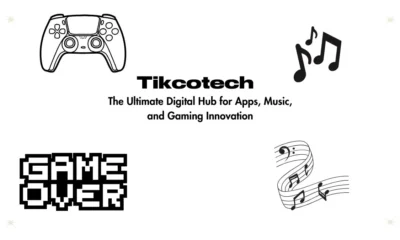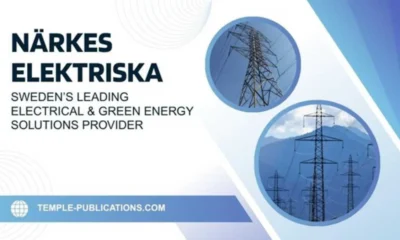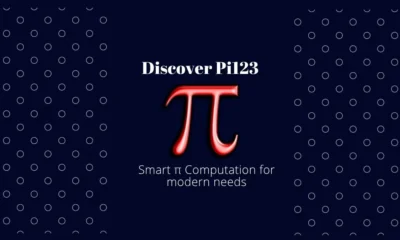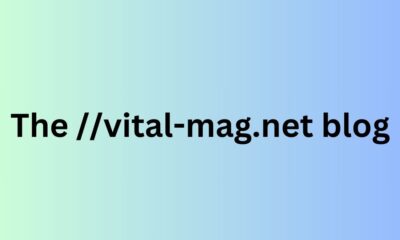AI
The Art of Zoo: A Journey Through Humanity’s Ever-Changing Bond with Animals
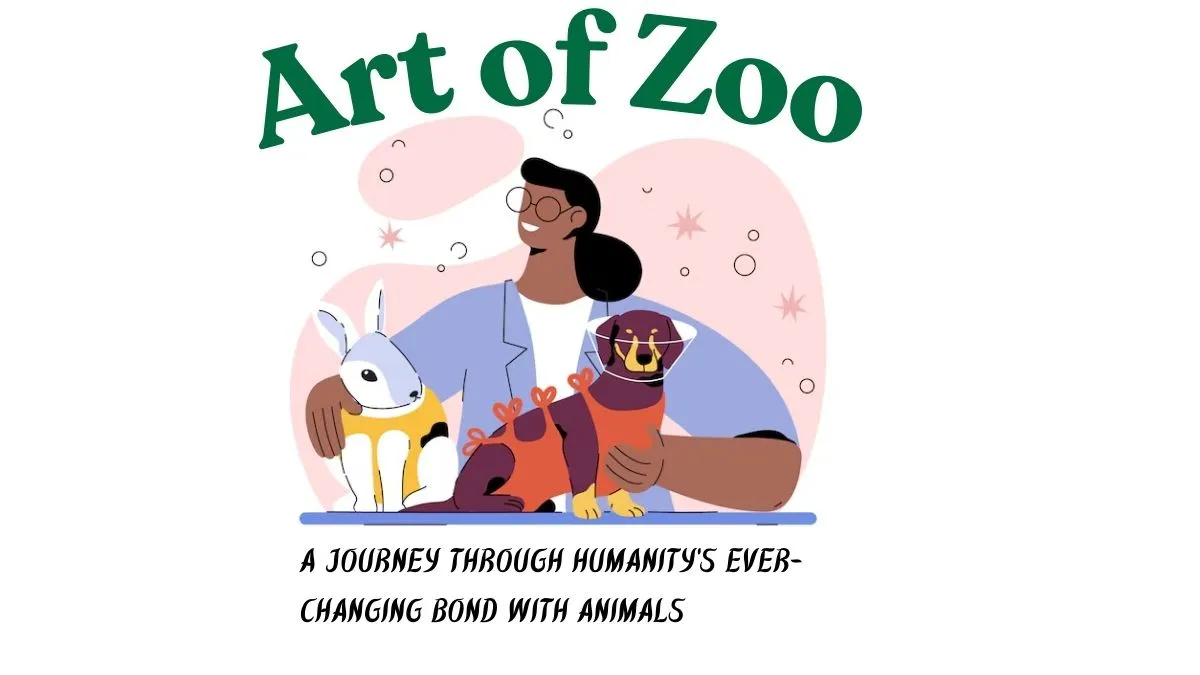
The art of the zoo consists of more than just animal enclosure management; it illustrates how human interaction with wildlife has developed over time. Throughout history, human beings have studied and preserved animals for admiration and research purposes while developing cultural values and ethical discussions. The art of the zoo began as early menageries and evolved into essential wildlife protection facilities that we see in modern conservation parks today. Ethical zoos serve as educational institutions and conservation centers that teach people about the value of biodiversity. This path demonstrates how human curiosity and responsibility have shaped our methods of dealing with captive animals.
Ancient Zoological Parks: Symbols of Power and Prestige
Throughout the history of mankind, from ancient times such as Egypt, China, and Mesopotamia, rulers displayed exotic animals to showcase their authority over others. Menageries during that period served as zoos, housing exotic animals including lions, elephants, and tigers for social status rather than animal welfare. These primitive animal collections developed into more advanced zoological knowledge, albeit without any scientific basis. Over the course of history, society progressed from treating animals as possessions to recognizing their essential ecological role. The art of the zoo has transformed into an institutional focus on conservation alongside ethical animal care, surpassing mere display functions.
The Evolution of Zoos: From Menageries to Public Institutions
During the Enlightenment, society transformed private animal collections into public educational research institutions that became zoological facilities. In 1828, the London Zoo became one of the first contemporary zoological facilities focusing on scientific investigation instead of amusement. Society developed an increasing concern for animal welfare and ecological responsibility, leading to this change in zoo management. The expansion of knowledge urged zoos to redesign their facilities into natural habitat spaces, thus improving animal welfare and ethical practices. The contemporary art of the zoo focuses on wildlife education while supporting conservation efforts instead of confining animals in cages.
Architectural Design: Crafting Spaces for Human-Animal Interaction
Design elements in zoos play a central role because they shape how both animals receive care and visitors experience their visit. Modern zoological facilities concentrate on creating habitats that emulate wildlife environments through expansive spaces with concealed barriers and eco-friendly construction elements. These facilities dedicate space to animal enrichment programs that allow animals to move freely while exhibiting their natural behaviors. Thoughtfully designed exhibits provide better conditions for animals while simultaneously attracting more visitors to the zoo. Zoo architectural practices evolve over time by blending humane animal treatment with interactive educational zones for guests.
Artistic Representations: Animals in Visual Arts
Visual art has evolved under the influence of zoos, from prehistoric cave paintings to present-day wildlife photography. Throughout history, artists have used animals in their artwork to represent power and spirituality, as well as companionship. During the Renaissance, artists depicted exotic animals in their paintings to showcase wealth, but today, digital media uses these animals to educate people about conservation. The art of the zoo inspires artists to create works that showcase the elegance and complexity of wildlife species. Modern animal-themed artworks sustain the connection between human beings and nature by promoting appreciation and empathy for the animal realm.
Literature and Mythology: Narratives Shaping Human-Animal Bonds
Through the art of zoo literature, myths and folklore have been formed. From Aesop’s fables of ancient times to contemporary novels, we see animals used to illustrate ethical teachings and portray profound relationships between humans and animals. Storytelling through classic literature and children’s books has shaped public understanding of animal respect within society. Through literature, the art of the zoo reminds us of our duties toward wildlife. Through their power to shape public understanding, these narratives promote both animal empathy and wildlife conservation, as well as ethical treatment of animals, which strengthens zoological institutions’ purpose of protecting endangered species.
Ethical Considerations: The Morality of Captivity
The practice of zoos prompts essential moral debates about animal confinement. Traditional zoological centers used to entertain the public, but contemporary institutions focus primarily on wildlife preservation and animal well-being. Opponents of captivity claim it prevents animals from performing their natural behaviors, yet supporters point to breeding initiatives that save endangered species from extinction. Ethical zoological institutions create ample living areas for their animals, alongside enrichment activities that include conservation work. Modern zoological facilities now prioritize sustainable practices that combine proper animal welfare with conservation-focused protection of wildlife worldwide. The ongoing debate about zoological establishments continues to shape how these institutions will evolve in the future.
Modern Zoos: Centers for Conservation and Education
Modern zoological establishments emphasize conservation alongside education as their primary goals. The modern zoo partners with wildlife organizations to protect endangered species, supports habitat restoration projects, and conducts vital research. Modern zoological institutions operate breeding initiatives to save critically endangered species, including pandas and rhinos. Educational facilities at zoos teach visitors essential knowledge about biodiversity and ecological stability. The modern zoo practice has evolved into responsible wildlife management, transforming zoos from recreational sites into vital contributors to global conservation initiatives.

Human-Animal Collaboration in Art of zoo
The art of zoos transcends barriers to create meaningful connections that unite humans with animals. Zoological institutions enable animals to participate in painting activities that generate artwork for conservation fundraising initiatives. Wildlife photographers and filmmakers utilize zoos to capture footage of rare species while producing educational content through artistic means. These partnerships demonstrate animals’ emotional capacities and their ability to inspire creativity. Through art activities, human-animal relationships advance from mere captivity to meaningful artistic expressions that serve conservation goals and raise awareness..
Cultural Variations: Zoos Around the World
Different cultural traditions express themselves through zoo practices because each society holds distinct values. European zoos dedicate themselves to conservation research alongside the spiritual practices that Asian zoological facilities incorporate into their display methods. African wildlife reserves function as natural zoological establishments that protect wild animals in their original habitats. The way different nations approach ethics determines their stance on animal care. Expanding public awareness leads to more nations implementing compassionate and environmentally friendly zoo practices. Knowledge of worldwide cultural variations enables better zoo practices that ensure all zoos maintain superior standards in animal management and conservation work.
The Future of Zoos: Evolving with Society
Zoo practices transform through modern technology and the moral assessment of animal welfare. Upcoming zoological institutions will implement virtual reality systems alongside artificial intelligence monitoring solutions and sanctuary models to enhance animal welfare standards. Conservation programs will grow through their combination of genetic studies and habitat restoration activities. The changing perspectives of humans regarding wildlife require zoological facilities to maintain equilibrium between educational experiences, entertainment value, and ethical standards. The art of the zoo progresses toward sustainable ethical methods, positioning these institutions to protect biodiversity for future generations.
Conclusion: Reflecting on Our Shared Journey
Humanity demonstrates evolving attitudes toward wildlife through the art of the zoo. Over time, zoos have evolved from their initial role as menageries into educational facilities that serve as ethical institutions. Historical importance, along with current challenges, allows us to honor the protective role of these institutions for wildlife. Through innovation and sustainability principles, the art of the zoo maintains its ability to influence human-animal interactions. Zoos will thrive in the future by using responsible approaches combined with public education to support conservation efforts while ensuring proper care for animals.
AI
From Robotic to Real: How CudekAI Makes Your AI Content Sound Authentic
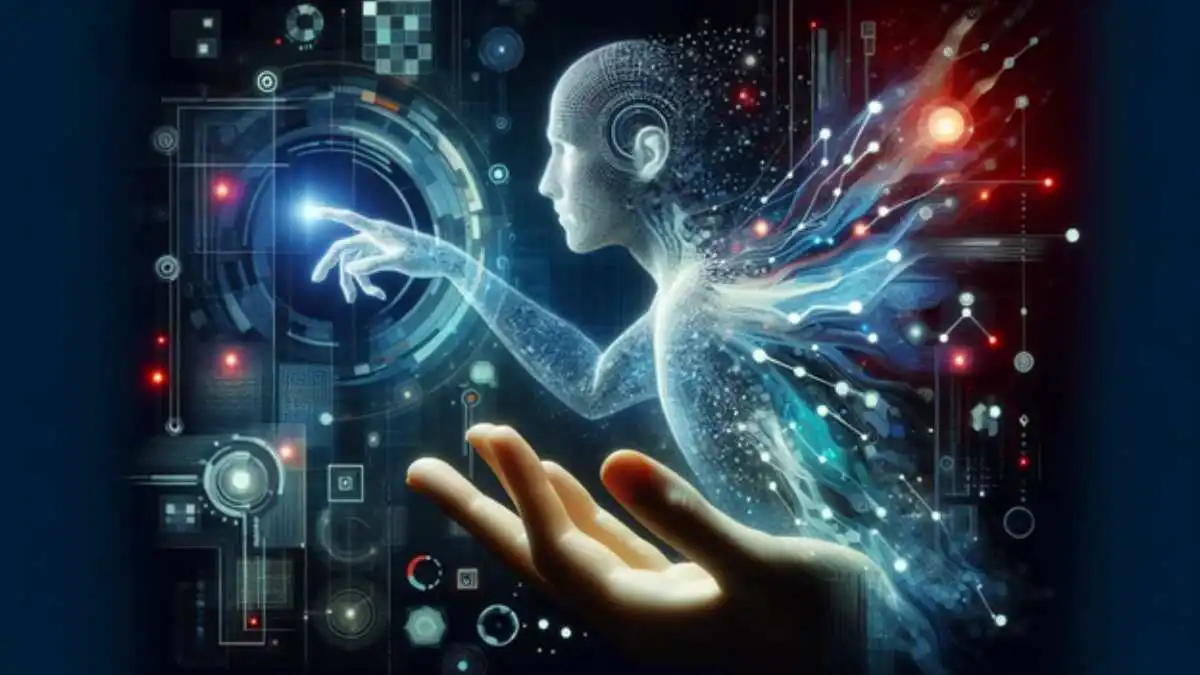
In today’s content-driven world, artificial intelligence has become an essential tool for writers, bloggers, students, and marketers. Platforms like ChatGPT offer fast and efficient content generation — whether you need a blog post, product description, email, or social media caption. However, there’s one persistent issue with AI-generated text: it often lacks the natural, human touch.
That’s where CudekAI steps in. This advanced AI humanizer is designed to transform chatgpt text into human (transformar texto do chatgpt em humano) writing — improving flow, emotional tone, and readability while helping users avoid detection by AI-content checkers. If you’re using AI to generate content but want it to sound like a real person wrote it, CudekAI may be the perfect tool for your workflow.
Why AI-Generated Text Sounds Robotic
While ChatGPT and other language models are trained on vast amounts of human-written text, their output can still feel artificial. Common characteristics of robotic text include:
- Repetitive sentence structures
- Predictable word choices
- Lack of nuance or personal tone
- Overly formal or generic phrasing
- Minimal emotional depth or storytelling
AI content is functional, but often not engaging. Readers can sense when content lacks authenticity, and so can platforms like Google, Turnitin, or Originality.ai. If you want to truly connect with your audience (or avoid detection penalties), you’ll need to humanize that AI-generated content.
The Solution: CudekAI
CudekAI is a cutting-edge tool designed to transform ChatGPT text into human content with just a few clicks. It goes beyond simple paraphrasing by restructuring sentences, improving flow, and adding a more natural tone reflecting real human expression.
Whether you’re publishing blog articles, submitting academic work, or preparing marketing content, CudekAI makes your writing sound authentic, relatable, and safe from AI detection systems.
Key Features of CudekAI
✅ Natural Sentence Flow
CudekAI analyzes AI-generated content and rewrites it with a more conversational rhythm. The result is content that sounds like it came from a thoughtful human writer, not a machine.
✅ Tone and Emotion Control
You can select the tone that suits your needs — whether professional, casual, persuasive, or academic. This helps ensure your writing matches your audience and intent.
✅ Passes AI Detection Tools
Modern AI detectors scan content for statistical patterns. CudekAI rewrites your content to avoid those patterns, helping you bypass tools like GPTZero, Turnitin, and others.
✅ Language and Style Flexibility
Need to write in English, Spanish, or another language? CudekAI supports multiple languages while maintaining an authentic voice and tone.
Why Humanizing AI Text Matters
📈 SEO Performance
Search engines are now prioritizing helpful, authentic content written for users. If your blog post sounds robotic or overly optimized, it may not rank well. Humanized text improves time-on-page, reduces bounce rates, and encourages backlinks.
🎓 Academic Integrity
Students using ChatGPT for essay drafts must rewrite the content to avoid AI detection software. CudekAI enables learners to revise their work while safely keeping the original ideas intact.
💼 Brand Credibility
Whether you’re a freelancer or a company, your voice matters. Robotic content damages brand trust, while authentic writing strengthens relationships and encourages engagement.
How to Transform ChatGPT Text into Human Writing with CudekAI
- Generate a Draft with ChatGPT
Start by creating a draft using ChatGPT or any other AI writing tool. This gives you a content-rich base from which to work. - Paste into CudekAI
Copy your text and paste it into CudekAI’s platform. - Choose Your Tone
Select the tone and writing style that fits your purpose — whether you’re writing a friendly blog post, a formal report, or a casual email. - Click “Transform”
CudekAI processes your content and delivers a polished, human-like version that feels natural and reader-friendly. - Make Final Touches
Review the humanized content and add personal insights or formatting before publishing or submitting.
Real-World Applications
Bloggers & Content Creators
If you rely on AI to help with your blogging, you’ll want your content to feel engaging, not mechanical. CudekAI helps transform ChatGPT text into human stories that capture attention and build loyalty.
Students & Academics
Many students use AI tools for inspiration, but raw ChatGPT output often triggers academic detection systems. CudekAI ensures essays and research papers sound like they came from you — not a bot.
Copywriters & Marketers
Marketing copy needs to resonate. If your ad or email reads like it was written by software, your message might fall flat. CudekAI brings back emotional tone and persuasion — two keys to conversion.
SEO Professionals
To stay ahead in 2025, your content needs to meet Google’s helpful content standards. Humanized writing performs better in search, both in terms of engagement and ranking.
CudekAI vs. Basic Paraphrasers
Unlike generic paraphrasing tools, which only change a few words or swap synonyms, CudekAI rewrites for tone, structure, emotion, and authenticity. It doesn’t just help you avoid AI detection — it makes your content genuinely better.
| Feature | CudekAI | Basic Paraphraser |
| Sentence restructuring | ✅ Yes | ❌ Minimal |
| Tone adjustment | ✅ Multiple tones | ❌ None |
| AI detection evasion | ✅ High success | ❌ Low success |
| Language support | ✅ Multilingual | ⚠️ Limited |
| SEO-readiness | ✅ Optimized | ❌ Not focused |
Final Thoughts
AI writing tools are incredible — but they’re just the beginning. In 2025, the real winners in content creation are those who can blend AI efficiency with human authenticity.
With CudekAI, you can transform ChatGPT text into human writing that sounds natural, passes AI detection, and creates meaningful connections with your audience. Whether you’re writing for school, business, or the web, this tool empowers you to take control of your voice and stand out in an AI-saturated world.
AI
Cruciais: Optimizing Processing Tasks in Digital Environments
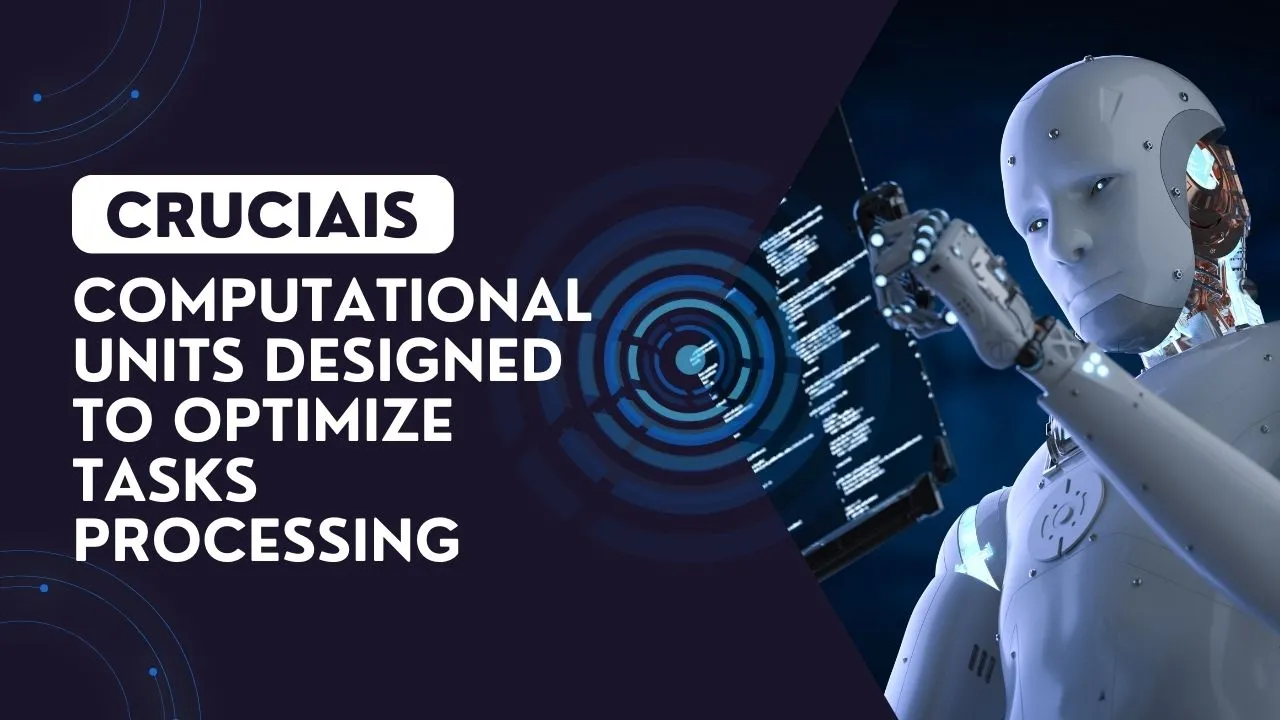
Cruciais are specialized computational units designed to enhance the efficiency of processing tasks in digital environments, especially within artificial intelligence (AI) and data-heavy contexts. The term “Cruciais” is derived from the fusion of “crucial” and “AI,” underscoring their importance in modern computing. These units are tailored to handle complex workloads that demand precision, speed, and scalability. As digital systems continue evolving, their role becomes increasingly critical for applications that require fast, intelligent decision-making, ensuring smoother operations in industries like healthcare, finance, and manufacturing.
How Cruciais Differ from Traditional Computational Units
These units are distinct from CPUs and GPUs, offering specialized capabilities. While CPUs are general-purpose processors and GPUs excel at handling parallel tasks, These units focus on specific AI and machine learning workloads. Their architecture prioritizes speed and precision, allowing them to outperform conventional processors in tasks like real-time image recognition or predictive modeling. Furthermore, they feature low-latency processing, essential for time-sensitive applications such as autonomous systems. Unlike GPUs, which require extensive power, Cruciais are designed with energy efficiency in mind, making them ideal for edge computing environments.
Applications of Cruciais in Artificial Intelligence
- Machine Learning Models: Cruciais enhances training times for deep learning models, accelerating pattern recognition and decision-making processes.
- Natural Language Processing (NLP): These units optimize language models for faster sentiment analysis, text generation, and translation.
- Computer Vision: Cruciais enables real-time image and video processing, supporting tasks like object detection and facial recognition.

Cruciais for Data Processing and Big Data Analytics
These units play a pivotal role in managing and analyzing massive datasets. Traditional processors struggle with the volume and velocity of big data, but they are engineered to handle these challenges. They support distributed computing systems, ensuring smooth performance even with real-time data streaming. Predictive analytics powered by Cruciais enables businesses to forecast trends, identify risks, and make informed decisions. Their ability to process data quickly and accurately makes them invaluable in sectors like finance, marketing, and logistics, where timely insights are critical.
Architecture and Design of Cruciais
- Core Components: Cruciais features specialized cores optimized for specific AI workloads, ensuring high performance.
- Energy Efficiency: These units integrate cooling systems and power management to minimize energy consumption and prevent overheating.
- Modularity: Cruciais are designed to scale across systems, ensuring seamless upgrades for evolving digital environments.
Cruciais in Cloud and Edge Computing
Cruciais bridge the gap between cloud and edge computing by enabling efficient processing at both ends. In cloud environments, they accelerate the training of large-scale AI models, ensuring faster deployment of services. On the edge, these units empower devices to process data locally, reducing reliance on cloud infrastructure and minimizing latency. This is especially beneficial for IoT applications, where real-time decision-making is crucial. For instance, smart cameras equipped with Cruciais can analyze footage instantly, triggering alerts without sending data to the cloud.
Challenges in Implementing Cruciais
Adopting these units in mainstream computing presents several challenges. Scalability is a primary concern, as integrating Cruciais into existing infrastructures requires careful planning. Hardware limitations, such as production bottlenecks and supply chain issues, can hinder widespread deployment. Moreover, they are still relatively expensive compared to traditional GPUs, making them less accessible for smaller organizations. Software compatibility is another hurdle, as AI frameworks need to be optimized to leverage these units effectively. Overcoming these challenges will require collaboration between hardware manufacturers, software developers, and businesses.
Comparing Cruciais with GPUs and TPUs
- Speed: These units offer higher speed for specific AI tasks compared to GPUs and TPUs.
- Specialization: While GPUs handle general-purpose tasks, they focus solely on AI workloads.
- Energy Efficiency: These units consume less power, making them ideal for edge computing.
- Cost: These units are more expensive but provide better value for highly specialized applications.
Security and Ethical Concerns
I believe that the deployment of these units poses a great security and ethical dilemma to TE. Since these units’ AI systems can be used for making decisions that often affect large numbers of people, it is crucial to maintain transparency and fairness in the resulting decision-making process. Such units could be misused to design malicious content, including deep fakes or manipulating the data generated. Measures that should be put in place include safety features such as operational security, access control, and mode of encryption, and they should be built within ethical standards. The role of policymaking and that of the developers is, therefore, to develop laws that would govern the use of these units so as to maintain the essence of innovation while discouraging the development of applications and systems that would pose a threat to the public and erode their trust.

Cruciais and Sustainability
Sustainability is a key consideration in the development of these units. These units are designed to be more energy-efficient than traditional processors, contributing to reduced carbon footprints. Their ability to process data faster also means less time spent running high-power computing systems. In industries focused on sustainability, such as renewable energy and smart agriculture, they enable optimized solutions that minimize waste and improve efficiency. As more companies adopt sustainable practices, the demand for energy-efficient units will continue to grow, further aligning technology with environmental goals.
Essentials in Academic Research and Development
Many academic institutions are engaged in research with reference to the enhancement of these units for various uses. To refine the components and discover other applications, the universites team up with the technology firms. They are also used in AI research platforms, where students and researchers can play with state-of-the-art systems. All these endeavours not only help in the growth of AI but also in the development of a global generation of computing experts. Stakeholders use conferences and journals to present their research work, guaranteeing that society continues to benefit from enhanced innovations.
Market Trends and Adoption of CriticalTechnologies
Increased awareness of this for use in various industries is opening new markets to producers quickly. These units have gained popularity with large organizations, which are the initial drivers of such innovations, although small companies and start-ups are now following suit. Experts in the global market have said that the need for this will continue to increase gradually in the future due to the development of artificial intelligence and edge computing. They are emerging as a new normal, finding applications in data centers, cloud services, and IoT meshes. As its use rises, manufacturers are now seeking to cut various costs associated with this newer technology in several industries.
Future Prospects and Innovations
The future of this is promising, with exciting innovations on the horizon. Researchers are exploring ways to make Cruciais even faster and more energy-efficient. Integration with quantum computing is expected to unlock new possibilities in AI and data processing. In the coming years, Cruciais could become a standard feature in consumer devices, enhancing everything from smartphones to smart homes. These developments indicate that they will continue to shape the future of computing, driving innovation and enabling new technological breakthroughs.
Conclusion
Cruciais represents a significant advancement in computing technology, offering specialized solutions for AI and data processing. Their ability to optimize complex tasks makes them invaluable across industries, from healthcare to manufacturing. While challenges remain, ongoing research and innovation are paving the way for broader adoption. As these units continue to evolve, they will play a pivotal role in shaping the future of digital environments, enabling smarter, faster, and more sustainable solutions.
AI
Nexus AlienSync: The AI Nervous System Powering Tomorrow’s Smart Systems
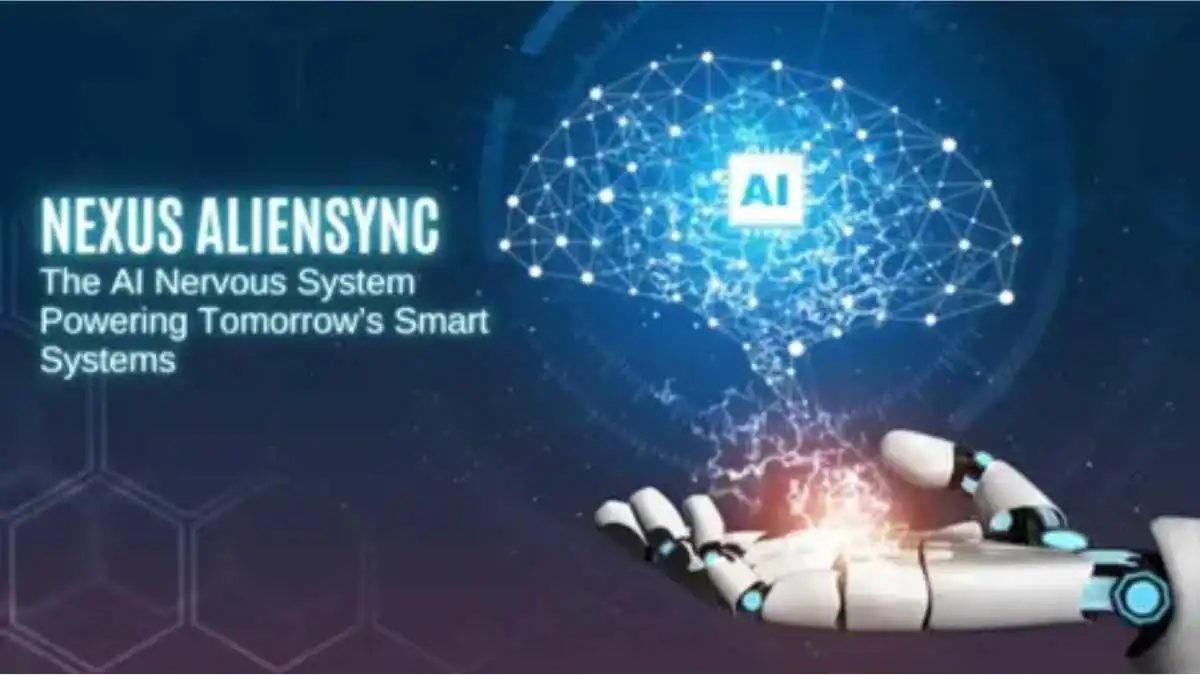
“AI won’t reach its full potential until it can truly communicate across systems. Nexus AlienSync is what makes that possible.”
Imagine if your body’s nervous system stopped transmitting signals between your brain and muscles. Chaos would ensue. That’s the state much of today’s artificial intelligence operates in—powerful, but fragmented. Nexus AlienSync changes that.
What is Nexus AlienSync?
Nexus AlienSync is an advanced AI synchronization and orchestration platform that acts as the connective tissue between disparate AI systems, enabling real-time communication, data alignment, and intelligent workflow control across cloud, edge, and on-prem environments.
How Nexus AlienSync Works
In essence, Nexus AlienSync will be designed to facilitate seamless communication among various AI agents and systems, enabling them to operate more efficiently. It does this by using three layers of architecture:
- Intelligent Protocol Matching: Automatically translates between incompatible APIs and AI models.
- Real-Time Data Pipeline: Syncs sensor inputs, AI predictions, and system commands with low latency.
- Orchestration Engine: Manages workflows, triggers, dependencies, and model decisions.
This infrastructure enables organizations to run multiple AIs in parallel, across platforms and languages, without performance bottlenecks or data conflicts.
Key Features of Nexus AlienSync
1. Unified, Cross-Platform Integration
Nexus AlienSync is a platform that effortlessly bridges AI modules developed in any language across cloud, edge, on-premises, and hybrid systems. It is seamless to implement new AI functions to legacy systems or distributed infrastructures through a connector framework that makes the task lightning-fast, highly scalable, and without friction.
2. Real-Time & Predictive Data Sync
Nexus AlienSync does more than provide instant synchronization; it also predicts data flow disruptions. This engine, powered by machine learning, minimizes latency and data collisions, ensuring that AI decisions can be based on the most current and consistent information possible.
3. Adaptive Compatibility Engine
Its smart compatibility layer smartly maps data formats, protocols, and interfaces between different AI models and devices. This enables the smooth interaction of AI agents, regardless of the framework (e.g., TensorFlow, IBM Watson, PyTorch) or deployment environment.
4. Scalable, Resilient Architecture
Developed on scale, Nexus AlienSync lets you take advantage of distributed computing and parallel processing capability to perform enterprise-level work without sacrificing performance. It can be synchronized and operate quickly, whether with ten AIs or ten thousand of them.
5. Comprehensive Security & Developer Toolkit
When it comes to security, it features military-grade AES-256 encryption and multi-factor authentication (MFA), as well as full compliance with the GDPR, HIPAA, and SOC 2 standards. Security is essential, not a choice. SDKs in Python, JavaScript, and Go, RESTful APIs, Docker support, and Kubernetes compatibility enable developers to achieve significant power, allowing them to deploy quickly and implement CI/CD more easily.
Real-World Use Cases
Nexus AlienSync isn’t a theoretical product. It’s already being adopted by sectors needing complex AI coordination:
1. Healthcare
- Syncing diagnostic AIs, wearable sensor data, and patient record systems in real time.
- Ensures timely alerts for cardiac arrest or drug interactions.
2. Smart Cities
- Coordinates traffic AI, environmental sensors, and emergency response systems.
- Allows predictive rerouting and air quality optimization.
3. Industrial IoT
- Links robotic arms, quality inspection AIs, and cloud analytics tools.
- Reduces production errors and downtime.
Benefits of Nexus AlienSync
- Interoperability Across Environments: From cloud to edge to on-prem, it’s one sync layer for everything.
- Model-Aware Coordination: Understands the AI lifecycle, including training, tuning, prediction, and deployment.
- Real-Time System Intelligence: Supports decisions on the fly, reducing lag in bright environments.
- Security & Compliance: Meets strict requirements for healthcare, finance, and government.
📌 Who Should Use Nexus AlienSync?
- AI teams needing model-to-model communication
- Enterprises with hybrid cloud environments
- Robotics and IoT companies running distributed systems
- Smart cities and national infrastructure planners
- Developers building cross-platform AI applications
Nexus AlienSync vs Competitors
| Feature | Nexus AlienSync | Apache Kafka | MuleSoft | Azure Synapse |
| AI Model Orchestration | ✅ Yes | ❌ No | ❌ No | ❌ No |
| Real-Time Sync for AIs | ✅ Yes | ⚠ Partial | ❌ No | ⚠ Limited |
| Built-in Compliance Layer | ✅ Yes | ❌ No | ✅ Yes | ✅ Yes |
| Developer SDK & API Toolkit | ✅ Yes | ✅ Yes | ✅ Yes | ✅ Yes |
| Best For | AI Integration | Event Streams | API Linking | Data Warehousing |
Security & Compliance
Nexus AlienSync comes with:
- End-to-end encryption (AES-256, TLS 1.3)
- Role-based access control (RBAC)
- SOC 2 Type II and ISO 27001 certification
- GDPR & HIPAA audit frameworks
Developer Experience and Customization
Nexus provides:
- REST & GraphQL APIs
- Webhooks for trigger-based workflows
- SDKs in Python, Java, Node.js
- CLI tools for DevOps pipelines
- Real-time log streams for debugging and analytics
“Integrating AlienSync took us from 3 months of AI model isolation to 2 days of full inter-AI collaboration.” — CTO, SmartMedix.
Roadmap & Future Features
The roadmap of Nexus AlienSync indicates a progressive vision for its future. Future improvements will include Autonomous AI Sync Agents that enable self-diagnosis and healing of synchronization flows, thereby reducing the need for manual interaction. It is also planned that the platform will roll out blockchain-based audit trails to guarantee transparent and immutable documenting of decisions made by AI. LLM-specific orchestration is also expected to be a primary feature, aimed at fine-tuning and deploying large language models in hybrid environments. Moving forward, Nexus plans to provide experimental support for quantum computing integration, thus becoming a pioneer of AI infrastructure on a new level.
Final Thoughts: Should You Trust Your AI to Nexus AlienSync?
Nexus AlienSync isn’t just another integration platform. It’s a visionary system designed to usher in the next generation of smart, interoperable, and scalable AI ecosystems. Whether you’re building a smart hospital, autonomous fleet, or a national infrastructure, AlienSync may be the unifying layer your AI stack needs.
-

 BIOGRAPHY1 month ago
BIOGRAPHY1 month agoBehind the Scenes with Sandra Orlow: An Exclusive Interview
-

 HOME7 months ago
HOME7 months agoDiscovering Insights: A Deep Dive into the //vital-mag.net blog
-

 HOME10 months ago
HOME10 months agoSifangds in Action: Real-Life Applications and Success Stories
-

 BIOGRAPHY8 months ago
BIOGRAPHY8 months agoThe Woman Behind the Comedian: Meet Andrew Santino Wife

